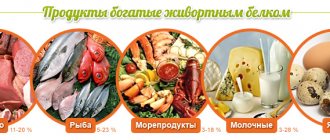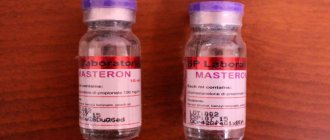- August 26, 2019
- Sports nutrition
- Daria Dorogokup
Milk protein is a valuable nutritional product. Its effectiveness is due to the presence of useful microelements and vitamins. Doctors recommend drinking milk to all people who are not allergic to this product. Multifunctional protein should be in the daily diet of pregnant women, athletes and children. Only in this case will the construction of human body cells occur at the proper level.
Description of nutritional product
Natural milk protein is necessary for humans to synthesize amino acids, which are involved in the construction of body cells. This substance appears in all vital processes. Amino acids are responsible for the formation of muscle tissue and coordinated muscle function. Milk protein is involved in metabolic processes and the creation of strong immunity. Without this substance, the central nervous system and brain will not be able to function normally.
The human body can synthesize half of all amino acids on its own. Only regular consumption of protein will help keep your body in good shape. This substance is the basic building material for the body. Protein is present in nails, hair, bones, skin, and internal organs. Amino acids are responsible for the timely delivery of nutrients to the heart and nervous system.
What are lactose and lactase?
Lactose, or milk sugar, is the main carbohydrate in milk. At its core, lactose is not dangerous, and even has benefits: in addition to its nutritional value, it, for example, promotes better absorption of calcium from milk. However, the digestibility of lactose plays a crucial role in this. Lactic sugar intolerance is a problem that, according to various sources, affects 30 to 50% of Russians [1], [2]. This problem is related to an enzyme called lactase, which is produced by the body, is responsible for the absorption of lactose and becomes less active with age - as can be seen in the graph below:
Compound
Milk protein is a product that is widely in demand among athletes. It is consumed daily by those who strive to have good muscle mass and strength. Milk is a source of the most beneficial proteins: whey and casein. One cup of nutritional liquid contains 8 g fat, 9 g protein, 11 g carbohydrates. Everything else is water. Experts note that casein is the main part of milk. The benefits of this product are highly valued by ordinary people, as well as professional athletes and bodybuilders.
The main components of whey protein boast numerous health benefits. The dairy product contains glycomacropeptides, beta-lactoglobulins, and immunoglobulins. Beneficial whey fractions strengthen the immune system. Large manufacturers of sports proteins have realized that by removing water, carbohydrates, and fats from milk, they can obtain a concentrated source of protein, which at the final stage is dried and crushed. This is the most effective way to extract all the benefits from milk. Manufacturers managed to achieve minimum calorie content.
Is lactose-free milk harmful?
Is it possible to drink lactose-free milk if there is no problem with lactase deficiency? Can! For example, Valio Eila milk contains 30% less carbohydrates, which means fewer calories. It is also additionally enriched with vitamin D, which will help provide the body not only with the most important vitamin, but also with calcium. The absence of lactose in this case does not affect the absorption of beneficial nutrients from milk or the taste of the product, so lactose-free milk benefits the body.
[1] Union of Pediatricians, St. Petersburg, 2012
[2] Yulia Khabarova, Suvi Torniainen, Hanna Nurmi, Irma Järvelä, Mauri Isokoski, and Kari Mattila: Prevalence of lactase persistent/non-persistent genotypes and milk consumption in a young population in north-west Russia, 2009
Sources of Effective Protein
A large percentage of this substance is found in regular milk and fermented milk products. They have a good nutritional basis and are also highly valued for their easily digestible calcium. It has been proven in laboratory conditions that milk protein is a product that is the main component in the human diet from the first days of life. A large percentage of protein is found in cheese, yogurt, yogurt, sour cream, kefir, and koumiss. The range of products available to everyone allows you to significantly enrich your diet with valuable amino acids without the cost of meat. This protein is easily absorbed by the body and therefore is an order of magnitude healthier than proteins with a complex structure (turkey, eggs, beef, chicken).
Factors that reduce the biological value of protein
Most plant proteins in the form of concentrates and isolates contain trypsin and chymotrypsin inhibitors. These substances significantly slow down the process of hydrolysis of proteins from legumes and oilseeds, and also prevent their complete hydrolysis by pancreatic protease enzymes. Also, these plant proteins contain lectins (glycoproteins that “glue” carbohydrates together). Lectins bind to cells lining the intestines, which prevents amino acids from passing through the intestinal wall.
Some trypsin and chymotrypsin inhibitors (Bauman-Birk type) are thermostable, while others (Kunitz type) are thermolabile (that is, not resistant to heat). Lectins are also heat labile. This means that after undergoing heat treatment, proteins from legumes and oilseeds are better absorbed (even better than isolates of native proteins).
Plant proteins contain tannins and phytates, which also reduce their biological value. For example, tannins interfere with the breakdown of polypeptides, a process that is catalyzed by trypsin. Also, the rate and completeness of protein hydrolysis decreases during their interaction with polysaccharides and dietary fiber.
Assessment of the biological value of proteins
Assessing the biological value of protein for producers is necessary because it allows identifying the most gentle methods of exposure, which maximize the nutritional value and functional properties of the native form (for example, the ability of lacto-globulin to transport Vitamin D3 in the intestine and the ability of lactoferrin to stimulate the development of beneficial microbiota).
For the end consumer, assessing the biological value of protein is also important; it allows you to accurately determine the optimal amount of a particular protein (or combination thereof) in the diet, avoiding deficiency and “amino acid antagonism” in excess. To carry out such an assessment, a diet with a protein content of 10% (by dry weight) is used, ensuring its energy value. Over the course of 9 days, changes in body weight are measured and the result is a protein efficiency ratio (PER) - this is the weight gain in grams per 1 gram of protein consumed.
Another indicator is the net protein efficiency ratio (NPR), which is calculated by subtracting weight loss from the protein-free group from the weight gain indicator and dividing the result by the amount of protein absorbed. The NPR indicator reflects the ability of the tested protein to effectively support the growth and functioning of the body.
There are other methods for assessing the biological value of protein, including enzymatic and microbiological. For example, the protein can be digested in the laboratory with pepsin, pancreatic trypsin, or pancreatin. This makes it possible to assess the speed and completeness of protein digestibility, as well as to determine whether any changes have occurred to it during industrial processing.
Forms of valuable substance
Many athletes are accustomed to using milk protein concentrate. During whole food filtration, the majority of fats and carbohydrates are removed. Most often, experts use ultrafiltration. This process is based on concentration, resulting in a universal product with a nutritious protein content of more than 75%. Dairy product isolate is in great demand. During processing of the concentrate, a high-quality component is obtained. The protein content exceeds 87%. The main percentage of all carbohydrates and proteins are eliminated. Whey and casein remain virtually unchanged.
Coprecipitate
Milk protein concentrate is actively used by athletes to build muscle mass. In terms of its amino acid value, casein is comparable to whey substances. The main difference is only in the content of methionine and lysine. Manufacturers of effective proteins prefer to use a universal combination of casein and whey proteins. Multifunctional coprecipitates are obtained from skim milk by co-precipitation of milk components. The desired effect is achieved by simultaneous exposure to temperature and calcium chloride. An integrated approach makes it possible to increase the degree of use of protein elements several times.
Protein-fortified milk powders derived from cow's milk are considered very important food components due to their nutritional value. These protein-enriched ingredients are used in food processing to bind and emulsify fats, bind and retain moisture, and retain and stabilize air.
Regular cow's milk is a very complex system, the mass fraction of protein in which is approximately 3.5%.
Depending on solubility, there are two main groups of milk proteins:
- caseins , which make up approximately 80% of the total nitrogen in milk, are insoluble at the isoelectric point (pH 4.6) at temperatures above 8 ° C and precipitate from milk under the same conditions;
- whey proteins are soluble in the pH range 3-8 (maximum solubility up to 96% is observed at pH 6.5).
Caseins are very prone to association due to the presence of highly hydrophobic regions, and the amino acid sequence leads to charge distribution, phosphorylation and glycosylation.
In milk, caseins occur in the form of large, sphere-like colloidal aggregates, or micelles, with a molecular weight of about 108 Da, which can be separated from whey proteins by a centrifugation process. The micelles also contain colloidal calcium phosphate, magnesium, sodium, potassium and citrate. It is believed that micelles consist of submicelles containing varying amounts of caseins and arranged in such a way that the κ-caseins are located on the surface of the micelle.
Hydrogen bonding, hydrophobic and electrostatic interactions play a significant role in maintaining the micelle structure. The binding of calcium to charged sites on proteins regulates hydrophobic interactions between proteins and submicelles, and calcium phosphate bridges impart stability to the micelle.
In native milk, electrostatic and spatial repulsion due to the κ-casein hair prevents micelle aggregation. Proteolytic dehairing by rennet coagulation or ethanol-induced decoating destabilizes the micelles and, depending on temperature, pH and ionic environment, calcium-mediated aggregation may occur. Cooling and heat treatment can cause partial dissociation of casein from micelles.
Removal of calcium from the micelle using salts leads to the dissociation of caseins, which ultimately leads to disintegration of the micelles depending on the conditions. Oxidation leads to the dissolution of colloidal calcium phosphate, destruction of the micelle structure and decrease in the charge of proteins, causing aggregation and precipitation of caseins.
The whey protein fraction is also heterogeneous and includes the main whey proteins: β-lactoglobulin, α-lactalbumin, serum albumin, immunoglobulins, β-casein derivatives, minor proteins such as lactoferrin, lactoperoxidase and other enzymes.
Breaches are highly resistant to temperature, while whey proteins are denatured. Thus, at a neutral pH (~6.7), milk can be heated to 140°C for 20 minutes before coagulation occurs. Whey proteins are denatured when milk is heated to a temperature of 72-75°C and interact with casein, forming a complex. Several differences between caseins and whey proteins are the basis for industrial methods for isolating caseins and whey proteins; however, they can also be isolated together in various high-protein products called milk protein concentrates or total milk proteins.
5.2.1. BRIEF SCHEME OF MILK PROTEIN PRODUCTION
Casein (acid and rennet) is derived from skim milk to minimize possible flavor degradation resulting from fat oxidation in casein powder.
When producing acidic casein, casein micelles are destabilized by reducing the pH of the milk to 4.6 using one of the following methods:
- adding an inorganic acid (usually 1-2 M HC1) to milk at a temperature of approximately 30°C;
- mixing milk at a temperature of about 10°C with a sufficient amount of cation exchange resin in hydrogen form, which causes the exchange of cations in the milk with H +, which leads to a decrease in the pH of the milk to approximately 2.0, followed by separating the sour milk and resin and mixing this milk with unprocessed milk that provides the required pH value (this method is not used in Russia);
- inoculation of milk with starter and fermentation at 30°C, which leads to the formation of lactic acid from lactose, resulting in casein coagulation when reaching the isoelectric point.
In the production of rennet casein, the casein micelles are destabilized at neutral milk pH by the use of a number of proteolytic enzyme preparations such as veal rennet or, moreover, genetically engineered chymosin or rennet substitutes such as microbial proteinases. K-casein is cleaved into para-k-casein and soluble glycomacropeptides, and the modified casein micelles become susceptible to the presence of calcium in the milk plasma and coagulate at temperatures above 20°C.
The process known as heat treatment of grain, which involves raising the temperature to 50-60°C, accelerates the continuous coagulation of destabilized micelles, leading to the formation of a curdled sediment (casein grain) that is easily separated from the whey.
By vibrating a movably or stationarily inclined screen (nylon or stainless steel) or polyester cloth filter in a cascade arrangement, or using mechanical devices such as a horizontal drum centrifuge or rolling rollers, the curdled sediment and whey can be separated. After separation, the grain is washed to remove residual lactose, salts and whey proteins, then mechanically dehydrated and dried to less than 12% moisture content using pneumatic circulation dryers, fluid bed dryers or friction dryers. To obtain a uniform moisture content, the casein particles are mixed, then crushed or crushed.
Acid casein is insoluble when redispersed in water. Spray-dried sodium caseinate, most widely used in food processing, is made by dissolving acidic casein in NaOH. The casein curd, treated with acid, is diluted with water (40°C) to a dry matter content of about 25%, crushed in a colloid mill, and then this suspension is mixed with a NaOH solution (2.5 M) to a pH of 6.6-6.8.
The viscous solution is then vigorously stirred and heated in tanks at 75°C until completely dissolved, and then continued to be heated to 95°C. If necessary, to obtain the caseinate of the desired acidity, the pH is adjusted with NaOH and the sodium caseinate solution is then spray dried. The exposure time to high temperatures is limited due to the browning of casein caused by the Mayer reaction. To prevent the formation of lysinoalanine and undesirable flavors, the exposure time to the highly acidic environment is also limited.
Caseinates can also be produced using other production methods or by using other bases to neutralize the acidic casein. Whey is the liquid fraction of milk that remains after fat and casein are removed during the production of cheese and acid or rennet casein. Sweet whey (pH no less than 5.6) is obtained during the production of cheese and rennet casein, and acid whey (pH no more than 5.1) is obtained during the production of acid casein.
Acid whey has a higher mineral/ash content than sweet whey, and if the starter bacteria have produced acid by fermenting lactose, the lactose concentration will decrease.
Whey solutions and solutions enriched with whey proteins are usually pasteurized at minimum temperatures and durations, and stored at low temperatures. This allows minimizing microbiological spoilage and deterioration of the physicochemical properties of proteins and other whey components, which can affect the functional and organoleptic properties of the finished protein-fortified products.
Whey powder containing less than 15% protein is produced by whey concentration by direct evaporation or in combination with reverse osmosis followed by spray drying.
The mother liquor produced as a byproduct of lactose production can be concentrated and spray dried to produce a whey protein concentrate containing ~30% protein.
Lactose-free whey powder has a high mineral content (up to 25%), which may limit its use in some food processing and affect taste, aroma and nutritional value.
To produce modified whey powder, such as demineralized and demineralized/lactose-free whey powder, which contains 15-35% protein, demineralization is used to reduce the concentration of lactose and/or minerals in the whey using reverse osmosis, electrodialysis or ion exchange and/or ) crystallization of lactose.
Using various combinations of processes, the mineral composition of whey products can be adjusted.
Globular whey proteins readily denature when heated and adopt random structures that expose sulfhydryl and hydrophobic groups, accelerating aggregation and precipitation of denatured proteins, depending on heating temperature, exposure time, and calcium concentration.
Industrial protein precipitation conditions depend on the type of whey and the desired properties of the finished product, and the whey may be pre-concentrated and/or demineralized before precipitation.
To produce a product known as lactalbumin (not to be confused with the protein α-lactalbumin), the whey is demineralized and washed to reduce mineral and lactose content before drying.
5.2.2. PROPERTIES OF MILK PROTEINS
The solubility of protein products is an important functional property, as it determines their foaming and emulsifying abilities.
Acid casein is completely insoluble when dispersed in water, since the pH of the dispersion is close to the isoelectric point of caseins (pH 4.0-5.0). However, by adding a monovalent cationic base, the pH of the dispersion can be increased to pH values > 5.5, i.e. casein is converted into a completely soluble cationic salt (Na, K, NH3). Solutions containing 10-15% of such caseinates can be easily prepared at pH 6.0-7.0. At pH < 3.5, casein is also soluble, but the solution becomes more viscous than at neutral pH values, and gel-like systems are formed.
Rennet casein is also insoluble in water at pH ~7.0, but can be dissolved by raising the pH to values above ~9.0 or by adding calcium chelates such as food grade polyphosphates and/or citrates.
Whey proteins in their native globular form are soluble at low ionic strength over the entire pH range encountered in the food industry. However, their solubility decreases due to salting out at high salt concentrations, as well as when heated at temperatures above 70°C.
The degree of denaturation and subsequent insolubility at pH 7.0 and 4.6 caused by processing and storage of whey protein-fortified products depends on the heating temperature and duration, as well as the pH of the whey and the calcium ion concentration during heating.
As noted, milk forms a gel when processed, and casein is usually the gelling agent. Limited proteolysis of milk, leading to hydrolysis of the micelle-stabilizing κ-casein, leads to the formation of micelles containing para-κ-casein, which coagulate in the presence of whey Ca2+. Casein micelles can also be destabilized to form gels by mixing equal volumes of milk and ethanol.
Gelation or slow coagulation of milk caused by acid exposure results in the formation of acid gels, which may or may not have syneresis and which depend on milk pasteurization regimes. Pasteurization at temperatures above the denaturation temperature of whey proteins (usually above 85°C) reduces syneresis in fermented milk, while milk used for cheese and casein production is heated minimally to promote whey separation. The viscosity of casein is much higher at low pH (2.5-3.5) than at neutral pH, and a gel-like structure is formed at protein contents greater than 5% and temperatures below 40°C. Calcium caseinate has the property of thermoreversible gel. Concentrated dispersions of calcium caseinate (more than 15% protein) form a gel when heated to 50-60°C; when cooled, the gel liquefies, but when reheated, it forms again. The gelation temperature increases with increasing protein concentration from 15 to 20% and in the pH range of 5.2-6.0.
Temperature sensitivity is generally considered an undesirable property when preparing whey protein fortified products, however this property can be exploited to produce thermal gels from whey proteins that have excellent thermal gelling properties.
Water binding, or hydration, is an important functional property of dairy products in the food industry.
The level of hydration depends on the type of product; hydration values for casein micelles are in the range of 1.4–6.4, for casein and caseinates – 0.7–3.8, and for individual native whey proteins – 0.32–0.60 g H20 per 1 g of product.
However, when whey protein solutions that contain sufficient amounts of protein and have suitable dissolution conditions (pH, ions, etc.) are heated, gelation occurs, and the water retention properties of such gels significantly improve the texture and rheology of some products. According to research, the sorption rates of some milk proteins in a simulated flour dough system are in the range of 0.96-3.45 g of H20 per 1 g of product.
Dairy protein products in general, and caseinates in particular, are very good fat emulsifiers and are therefore widely used in this capacity in the food industry.
5.2.3. APPLICATION OF MILK PROTEINS
Milk proteins are widely used in the production of bakery products.
Since casein contains a fairly high amount of lysine, it is an excellent dietary supplement for cereals that do not contain lysine.
Casein/caseinates are added to breakfast cereals, dairy biscuits, protein-fortified breads and cookies, high-protein breads and biscuits as a nutritional supplement, and to frozen cakes and cookies as an emulsifier and texture improver.
The type of casein/caseinate must be chosen with particular care so as not to impair the baking process.
Milk proteins are used as an additive in the production of standard dairy products, as well as in the production of dairy product simulants.
Casein, vegetable fat, salts and sugar are used to produce cheese analogues, resulting in significant cost reductions compared to natural cheese production. Such cheese products can be used in pizza, lasagna, sauces, hamburgers and cheeseburgers, hot sandwiches, pasta, etc. The important functional properties of casein used here include water and fat binding, texture enhancement, melting, stringiness and cutability. For the production of cheese analogues, rennet, acid casein and caseinates are most often used.
Sodium caseinate in coffee creamer powder (which also contains vegetable fat, carbohydrates and emulsifiers/stabilizers) acts as an emulsifier, fat encapsulating agent and creamer, it also thickens the product, improves aroma and taste and improves resistance to milk protein flakes (t ie coagulation of cream) on the surface of hot coffee. These creamers are cheaper, have a longer shelf life, do not require refrigeration, and are more convenient to use than fresh coffee creamers.
Sodium caseinate is used to reduce syneresis, increase gel strength in yogurts, and is added to milkshakes as an emulsifier and foaming agent. Casein/caseinates, vegetable oil and carbohydrates such as corn syrup are the main ingredients used in the production of low-cost dairy imitation products that do not contain lactose, which is undesirable for some people.
Sodium caseinate is also used as an emulsifier and fat encapsulating agent in the production of high-fat powders that are used to add to doughs for fluffiness. Whipped fat powders or whipping cream contain casein, while some butter-like dairy spreads are made using milk and/or vegetable oil and various casein products. In these cases, casein is used as an emulsifier, and in dairy spreads it also improves texture and flavor.
Whey proteins are used in the production of yoghurts and cheeses to increase product yield, nutritional value and consistency. The viscosity and stability of yoghurts can be improved by replacing skim milk powder with whey protein concentrate (WPC). Up to 20% of casein in cottage cheese can be replaced by thermally modified SBC, which increases nutritional value and increases yield.
The use of sweet SBC in the production of Ricotta cheese increases the cohesiveness of the curd. Emulsions made with heat-denatured whey proteins and fats are used as the protein base for the production of cream cheese and cream cheese spreads. Sliced and packaged cheese products, produced using the emulsifying and gelling properties of whey proteins, are produced by heating skim milk powder and SBC powders dispersed in a milk fat emulsion in the SBC.
SBCs are also used to make cheese fillings and gravies, as they complement the taste and aroma of the cheese and soften the product.
Due to their whipping and foaming properties, as well as stabilization, breech jars are used for the production of chocolate, sparkling and other types of drinks.
Sodium caseinate is used as an emulsifier and stabilizer in cream liqueurs, which typically contain cream, sodium caseinate, added sugar, ethanol, and trisodium citrate, which prevents calcium-induced gelation; it is also used, albeit to a lesser extent, in other aperitifs.
Breechwoods are also used for clarification to reduce coloration, astringency and to help clarify wine and beer.
SBC can be added to fruit juices, soft drinks or dairy drinks to increase their nutritional value and are known as sports drinks. To be used in soft drinks, SBC must be fat-free, demineralized, highly soluble at pH 3.0, and have a mild aroma. The properties of SBC should not deteriorate during storage, and they should not react with flavors present in the product so as not to change the taste of the drink. Whey protein concentrates and isolates are added to flavored milk drinks to provide viscosity, consistency, and colloidal stability. They are also included as protein supplements in protein-enriched flavored sports drink powders and frozen juice concentrates.
Sodium caseinate is used in ice cream and frozen desserts to improve whipping properties, consistency, texture and to stabilize the product; for the same reasons, as well as its emulsifying and film-forming properties, it is used in the preparation of mousses, instant puddings and whipped coatings.
In ice cream production, a portion of the skim milk solids can be replaced with whey powder, and using lactose-free demineralized whey powder, or LWD, even more can be replaced without the substitution having any effect on the flavor, aroma, texture or appearance of the finished product. SBCs have also been used in frozen juice bars, complex coatings, especially chocolate coatings, and frozen desserts.
Milk proteins can be included in the flour used to make various pasta products, which improves the nutritional characteristics and texture of the product. Enriching pasta flour with undenatured whey protein results in a tougher pasta that is also more freeze/thaw resistant and therefore suitable for microwaving. The production of pasta imitation products, which contain a significant proportion of milk proteins, has also been developed.
Whey proteins can be used in aerated candy masses and incorporated into frozen, highly whipped sugar syrups containing whipped protein. Caseins are used in the production of toffee, caramel, fondant and other confectionery products because, when heated, they form a hard, elastic chewy base and also promote water binding and emulsification. SBC is less beneficial in these products as it forms a softer coagulum and the high lactose content can cause crystallization during storage.
Casein hydrolysates are used as foaming agents instead of egg albumin in marshmallows and nougat, as they impart stability at high temperatures, as well as good taste, aroma and dark color. The use of WBP and whey protein isolate (WPI) as egg white substitutes in the production of meringues is permissible only if these products are low-fat; conversely, the production of high-quality sponge cakes requires the use of fat-containing SBC.
In ground meat, caseins release meat proteins, leading to gelation and water binding, which helps emulsify fats, bind water and improve consistency. Up to 20% of meat proteins in sausages and rolls can be replaced with whey proteins, which are used to make primary emulsions of some fats and, through gelation during the cooking process, can support the formation of a spatial polymer network. Soluble, low-viscosity SBC can be used in injection brines to strengthen whole muscle products such as cooked ham. Injecting fresh or ground meat with a milk protein solution increases yield.
Milk proteins are widely used in special dietary preparations for sick or convalescent children suffering from malnutrition, as well as for people on weight loss diets. Demineralized whey powder is used for the production of adapted milk formulas for baby food, the protein/casein ratio of which is close to the protein/casein ratio in human milk.
Whey protein hydrolysates are used in the production of hypoallergenic peptide mixtures. Fractionation of whey proteins allows the development of formulas for milk formulas that have a whey protein composition similar to that of human milk proteins.
Hydrolysates of milk proteins are used for intravenous feeding of patients suffering from protein digestion disorders, diseases of the intestinal tract, as well as for patients after surgery.
Breaches are used in special preparations that improve athletic performance, and are also components of the nutrition of astronauts in space.
Special casein preparations are used to feed patients with cancer, pancreatitis or anemia. From β-casein, including β-caseinomorphins and tetra- to hepta-peptides, peptide drugs have been derived that regulate sleep, hunger, or insulin secretion. Sulfonated glycopeptides derived from casein are used to treat gastric ulcers. It is also believed that using casein in toothpaste can prevent tooth decay.
Whey/caseinate mixtures are used as whitening agents in gravies. Whey powder is included in dry soups and sauces, giving them a milky taste and improving the taste of other components, and also acting as an emulsifier and stabilizer. Caseinates are used as emulsifiers, regulate the viscosity of canned creamy soups and sauces, and are used in the preparation of dry emulsions for dehydrated creamy soups and sauces. Sauces and gravies containing whey proteins are less likely to stick to the sides of dishes, require minimal stirring, and are stable through freeze/thaw cycles.
Blends of caseinates and whey proteins are used as low-cost substitutes for skim milk powder in some convenience foods. Whey protein products can replace egg yolk in salad mayonnaises, and modified whey protein products can possibly replace fat in a variety of convenience foods. Milk proteins are also thought to improve the texture, stability and flavor of microwaved foods.
Re-wetted acid breech, acidified rennet casein can be extruded to produce puffed snacks. Caseinates can be extruded together with wheat flour to produce protein-enriched snacks.
Films formed from caseins/caseinates may be water-soluble or insoluble depending on the pH conditions used during their preparation, while water vapor permeability depends on the type of casein/caseinate used. Thermally induced disulfide cross-linking was found to be important for the preparation of films using SBR and SBI.
Calcium caseinate emulsions applied to fruits and vegetables have been used to reduce moisture loss.
Although a large amount of protein is already obtained from milk, it is likely that their amount will increase in the future.
Industrial fractionation methods for the production of specific proteins already exist but are at an early stage of development, while industrial methods for the production or isolation of bioactive peptides derived from caseins have yet to be developed.
An important task is to develop the production of milk proteins taking into account specific needs.
Casein
This substance is isolated from skim milk. To do this, experts use acidification to pH 4.5 and heating to + 38 °C. The result is a small clot, which is washed under running water and gradually dried to a powdery state. This is milk protein casein. It can be used as a separate product or in combination with other substances. There are several forms of casein, each of which differs in phosphorus content.
To drink or not to drink milk?
The decision is yours. If you are not allergic to milk, then it is unlikely to harm your body. If you decide to give up milk, replace it with other foods to get the nutrients. Essential vitamins and minerals can be obtained from tofu, eggs, mushrooms, almonds, salmon, lettuce and broccoli. And in order not to limit yourself in your favorite cocktails or coffee drinks, you can replace milk with plant-based analogues. Join the discussion on the topic on our social networks!
Globulin and albumin
These are universal whey milk proteins, which are distinguished by their high biological value for the human body. The classic albumin formula contains large amounts of sulfur, as well as several essential amino acids. Crystalline lactoalbumin is similar in its physicochemical properties to the substance of blood serum. Milk proteins are most often extracted by ultrafiltration. When pre-skimmed milk is passed through a special membrane, the whey substances are retained there. The resulting concentrate is stored in powder form.
Use by athletes
Among professional bodybuilders and athletes, milk protein is called protein. Its daily use allows you to restore the structure of cells. It is these properties of milk protein that attract athletes. After intense training, muscles recover much faster, and the process of muscle building begins. But regular foods do not contain enough milk protein. This is why athletes use universal whey protein, which is the main supplement of every bodybuilder. Whey proteins have a positive effect on the concentration of amino acids in the blood. Consumption of such compounds is advisable only before and after training. The rest of the time, it is better to combine several types of milk protein.
Milk protein in sports nutrition
First, a protein concentrate is obtained from the whey, the protein content of which varies up to 80%. The main disadvantage of the concentrate is the presence in its composition of a significant amount of fat and lactose. A purer product is an isolate. Regardless of how much protein there is in milk, thanks to modern equipment, this form of whey protein contains about 95% protein. It is more expensive than concentrate, but it contains no fat or lactose.
Learn even more about the types of protein and where it is found and its benefits in order to properly plan your diet!
Optimal dosage
Milk protein contains beneficial types of protein. You need to consume the nutrient in between main meals. Professional athletes are recommended to use universal milk protein shakes immediately after training. The first thing you need to do is read the attached instructions. Milk protein as part of artificially manufactured products is in great demand. Large manufacturers print the main list of components on the packaging of the product. You can make some pretty tasty cocktails using milk protein. If caloric intake is important to a bodybuilder, then it is better to use water or skim milk. A blender is suitable for mixing all ingredients evenly.
What does native protein mean?
Protein is a high molecular weight polymer built from amino acid residues. Almost all proteins are formed by twenty proteinogenic amino acids linked together by peptide bonds.
A native protein is a protein in its original form. The native structure of a protein is determined by the composition of the surrounding aqueous solution and environmental parameters such as pH, temperature, ionic strength, etc. Minor changes in these indicators do not lead to radical metamorphoses in the architecture of the protein, that is, its functional properties and nutritional value do not change.
Beneficial features
Whey protein is fast absorbing. All nutrients quickly enter the body tissues and muscles. Due to this, it is possible to replenish all energy costs and improve metabolic processes in a short period of time. Milk protein has a positive effect on organs and systems. Daily consumption of multifunctional whey substances allows you to speed up the process of fat breakdown. Due to this, you can get rid of excess subcutaneous fat without losing major muscle mass. In the medical field, milk protein is highly valued because its use helps normalize the production of cholesterol and special blood substances, which play an important role in the body’s lipid metabolism, increasing the sensitivity of cells to insulin. Due to this, blood sugar levels are reduced.
Whey proteins help normalize the overall level of irritability so that a person can control himself in a stressful situation. This occurs by optimizing cortisol production and increasing serotonin levels. It is worth noting that casein is a complex product that takes a lot of time to process. But this substance has its value. Unlike popular whey proteins, it improves overall tissue nutrition in the long term. This ability is important during intense physical activity, heavy monotonous work and high intellectual activity. Useful protein is absorbed gradually, transferring nutrients to those tissues and organs that need building material.
Milk: harm and benefit
Milk is one of the products that have a positive effect on many systems and organs of the human body [5][6].
For bone health
Perhaps everyone knows that milk is good for bones. This is because cow's milk is a source of calcium and vitamin D. In addition, the product contains vitamin K, ascorbic acid and magnesium. They are also essential for musculoskeletal health [7]. Intake of calcium and vitamin D alone is not enough to prevent osteoporosis. However, with regular physical activity, strength training, and a balanced diet low in sodium and high in potassium, the benefits for bones will be immediately noticeable.
Benefits for teeth
The combination of phosphorus and calcium found in milk is important for maintaining dental health.
The most common protein in dairy products is casein. It creates a thin film on the surface of tooth enamel, which prevents the loss of calcium and phosphorus under the influence of an acidic environment. Research has shown a link between regular milk consumption and a reduction in tooth decay.
Cancer Prevention
The risk of death from colorectal cancer is highest in geographic areas where residents receive the least amount of sunlight. As some researchers explain, the reason for this is a deficiency of vitamin D in the body. This useful substance, as has been scientifically proven, can protect against the occurrence of malignant tumors and slow down the growth of tumors. Other studies have shown that increased intake of lactose and calcium from dairy products may prevent ovarian cancer.
Anti-Depression Remedy
A sufficient level of vitamin D promotes the production of serotonin, the so-called happiness hormone - a substance responsible for improving mood, appetite and healthy sleep. Vitamin deficiency is associated with a tendency to depression, chronic fatigue, and PMS in women. Thus, milk as a source of vitamin D can relieve bad mood.
For heart health
Along with milk, the body receives potassium, which helps dilate blood vessels and lower blood pressure. Thus, increased milk consumption may serve as a remedy against hypertension.
It should also be noted that cow's milk contains high amounts of saturated fat and cholesterol. Because of this, some researchers, on the contrary, associate an increased risk of cardiac disorders with milk.
For strong muscles...
Children especially need dairy food during their growth period. However, not only babies need the proteins contained in milk. It is also important for adults, especially those who want to build muscle mass, to include this product in their diet. Milk is an excellent source of high-quality protein containing all the essential amino acids. In addition, whole milk can provide energy in the form of saturated fat.
Dairy proteins are excellent for promoting muscle growth and recovery. This effect has been proven in 20 different clinical studies involving people from different age groups.
...and a thin waist
Contrary to the common misconception that milk leads to excess weight, this drink, on the contrary, promotes weight loss. At least some studies have shown that consuming dairy products helps burn belly fat. This effect is achieved only if the daily calorie intake has not been exceeded. While it is difficult for scientists to explain the mechanism of this process, they suggest that all this is due to the calcium contained in milk.
Alternative to drinking water
The human body, two-thirds consisting of water, cannot live without liquid. Nutritionists say that the average adult should consume about 2 liters of clean water daily. However, if there is no water, you can quench your thirst with milk, which contains a large number of H2O molecules.
Skin care
Undoubtedly, you have heard about the Egyptian queen Cleopatra and her milk baths. According to legend, this woman, considered one of the most beautiful in the world, loved to take baths with milk and honey. This cosmetic procedure allows you to maintain softness, freshness and smoothness of the skin for a long time. Dairy products are still actively used to create skin care products. Milk is especially beneficial for dry skin.
This drink nourishes and smoothes the skin. Lactic acid helps remove dead cells and activates rejuvenation of the epidermis. Drinking milk internally saturates the body with vitamin A, an antioxidant that slows down age-related changes (prevents the appearance of wrinkles and age spots).
Other benefits of milk:
- helps reduce stomach acidity;
- has a beneficial effect on vision;
- promotes the production of red blood cells;
- relieves stress.
Negative effects on the body
The main harm of milk protein is that it can cause allergic reactions. Whey and casein can provoke a negative reaction in the body. A person may experience difficulty breathing, skin rashes, itching and burning. It is possible that the complexion may deteriorate and digestive processes may be disrupted. Excessive consumption of fatty dairy products can cause severe excess weight gain. Excess animal fat negatively affects the liver and increases the load on the stomach and cardiovascular system. The greatest danger is posed by those dairy products that belong to the category of confectionery products. These are curd masses and cheeses, ice cream. An excess of milk protein can lead to the opposite effect, due to which bone and muscle tissue will be gradually destroyed.
What about lactose intolerance?
Most people associate cow's milk with proper nutrition. However, there are many people in the world whose bodies are unable to digest lactose, a carbohydrate found in milk. Researchers believe that primitive man could have consumed milk exclusively in infancy. About 7,500 years ago, the population of Central Europe experienced some “restructurings” in the body. This happened after humanity domesticated cows and other livestock, and a new product – milk – entered their diet [12].
According to researchers, today approximately 15% of Europeans, 80% of Africans and Latin Americans, like primitive people, suffer from lactose intolerance [13]. Their bodies do not produce lactase, an enzyme necessary to break down dairy foods. In such cases, even small portions of dairy products cause abdominal pain, bloating, and diarrhea.
Modern medicine is looking for ways, if not to completely cure lactose intolerance, then at least to reduce its manifestations. This is how a lactose-free alternative appeared: soy, almond, coconut, hemp and other types of milk, including cow’s milk, but without the “problematic” carbohydrate.









